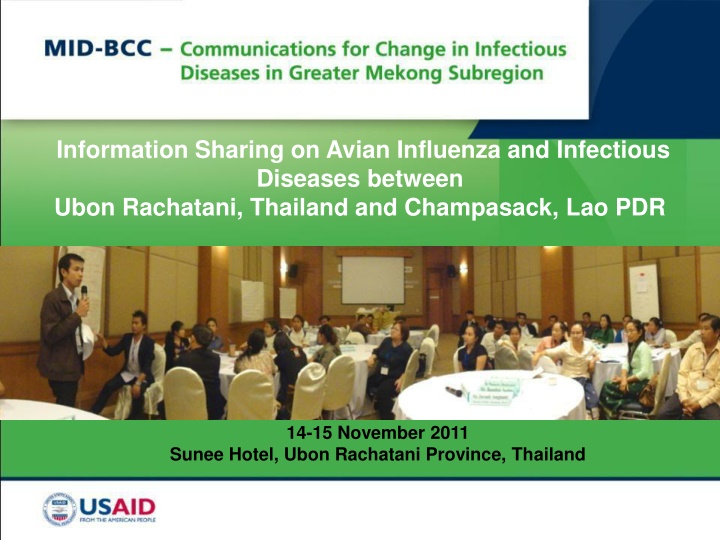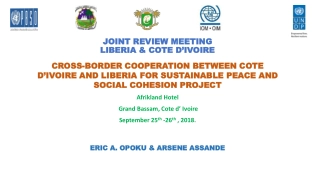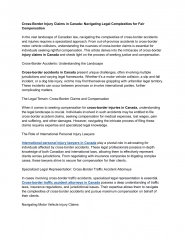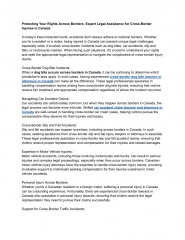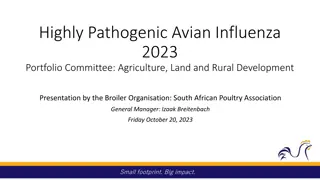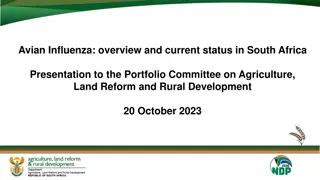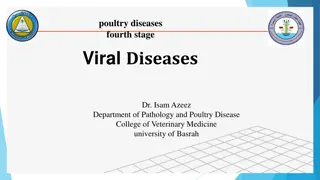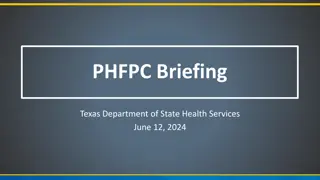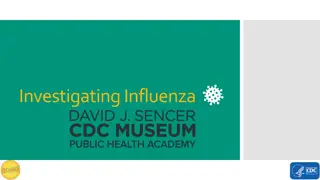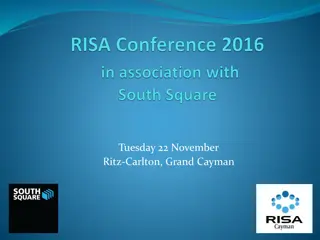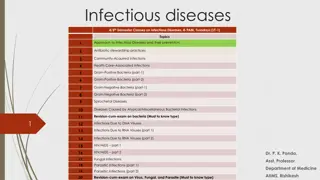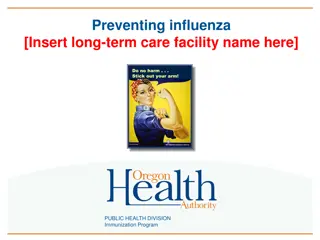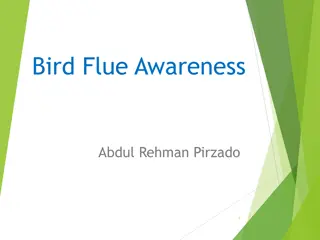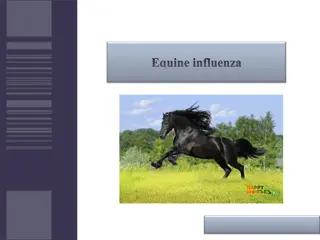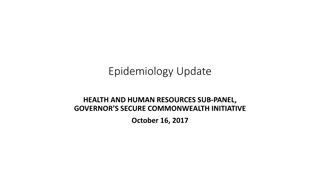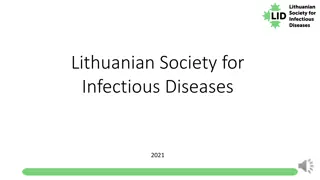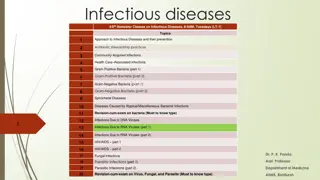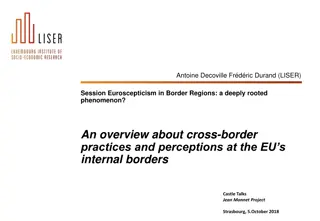Cross-Border Collaboration on Avian Influenza and Infectious Diseases
Lessons learned from implementing the National Avian Influenza Control and Preparedness Plan in Lao PDR highlight the importance of multi-sectoral collaboration and resource allocation. The cross-border collaboration between Ubon Ratchathani, Thailand, and Champasack, Lao PDR, aims to prevent and control infectious diseases through joint interventions and information sharing between the provinces."
Download Presentation

Please find below an Image/Link to download the presentation.
The content on the website is provided AS IS for your information and personal use only. It may not be sold, licensed, or shared on other websites without obtaining consent from the author.If you encounter any issues during the download, it is possible that the publisher has removed the file from their server.
You are allowed to download the files provided on this website for personal or commercial use, subject to the condition that they are used lawfully. All files are the property of their respective owners.
The content on the website is provided AS IS for your information and personal use only. It may not be sold, licensed, or shared on other websites without obtaining consent from the author.
E N D
Presentation Transcript
Information Sharing on Avian Influenza and Infectious Diseases between Ubon Rachatani, Thailand and Champasack, Lao PDR 14-15 November 2011 Sunee Hotel, Ubon Rachatani Province, Thailand
Background Lessons learned in implementing the 2006-2011 National Avian Influenza Control and Preparedness Plan in Lao PDR by the government showed that responding to an outbreak calls for the support and collaboration among multi-sectoral actors including those with direct influence to communities. Preparedness and response plans were mounted, approved and budgeted at the national or central levels. Provision of resources to local authorities and communities was inadequate. Cognizant of the need that local authorities should take the lead in making an effective preparedness and response plan, MID- BCC has supported information sharing on communication initiatives about infectious in twinned districts and villages of Champassak province in Lao PDR and Ubon Ratchani province in Thailand.
Background Champasack province in Lao PDR and Ubon Rachatani province in Thailand share border in a stretch of 361 kms. International checkpoints at both sides allow crossing of local people and foreigners. Both countries have reported cases of infectious diseases like Avian influenza (AI) and dengue. Champasack province experienced AI outbreak in 2004 and 2007. On November 9, 2001 the Thai and Lao ministers of health signed an agreement on joint activities to reduce the risk of disease transmission and outbreaks which founded the 2003 continuing relationship and collaboration between the provinces of Ubon Ratchathani with Champasack and Mukdahan with Savannakhet.
Cross-border collaboration The Memorandum of Understanding(MOU) in public health between Ubon Ratchathani and Champasak was signed in August 2003. The two provinces agreed on joint interventions to: Prevent and control of communicable diseases Control the import and export of non-standard and fake drugs Further development of health services and personnel Exchange information for disease surveillance Exchange of information on primary health care Educate the public
Cross-border collaboration In 2008, with USAID support through KENAN Asia, a joint cross-border functional exercise on self-referral AI human case was conducted to strengthen the surveillance and communication, information sharing to mitigate outbreaks in both provinces.
Objectives MID-BCC provided technical assistance to Champasack Health Department, Lao PDR to support a cross-border dialogue with Ubon Rachatani Provincial Health Office, Thailand. The two-day meeting was aimed at sharing information about communication- related activities on infectious diseases between the two provinces. Both provinces agreed to: Share experiences on success and best practices in reducing the risk and mitigating the impact of infectious diseases Revisit communication-related activities on avian influenza and other cross- border infectious diseases Review available communication materials and messages on avian influenza and other cross-border infectious diseases Draw recommendations on how to further strengthen sharing of information on avian influenza and other cross-border infectious diseases
Participants Participants were 41 public health staff from the twinned provincial health and district offices Champasack (18) and Ubon Racthatani (23), respectively. Twinned Border Districts Ubon Ratchatani Thailand Khongchiam Champasack Lao PDR Xanasomboun Phontong Sirindhorn Sukhuma Buntharik
Opening and Welcome Dr Suraporn Loiha, Chief Medical Officer of Ubon Rachatani Provincial Health Office opened the meeting and welcomed the participants. Dr Khampo Chaleunvong, Director of Champasack Provincial Health Office acknowledged the warm welcome from the provincial health department medical chief and underscored the sustaining cooperation between the two provinces. Dr Ratsamy Vongkhamsao, representing NEIDCO thanked FHI360 for supporting the activity which is very important to the government of Lao because it is in the process of expanding its infectious diseases program. Dr Ratsamy Vongkhamsao
Joint activities Cross-border orientation meeting, May 2008 Cross-border Surveillance Rapid Response Team (SRRT) on dengue infection, June 2008 Table top exercise on a self-referral AI human case, August 2008 Coordination meeting for the tabletop exercise on cross-border collaboration, February 2009 Tabletop exercise on Pandemic Influenza alert Phase 4-5, March 2009 Training of SRRT on cross-border disease surveillance and response, August 2011 Dr.Suwit Rojjanasaksothorn, Deputy Medical Chief of the Ubon Rachatani Provincial Health Office reported on the standing collaboration between the two provinces. Past important joint meetings cited were:
Information sharing activities Continuous reporting of communicable diseases weekly and monthly basis Through emails, the two provinces periodically share information on communicable diseases like SARS, Cholera, AI, H1N1, Encephalitis, Meningitis Tetanus, Diphtheria, and Measles using a common reporting form. Informal communication exists between the two provinces during disease outbreak.
Communication materials Above: Dr Khampo looks at the various communication materials in Lao language. Above: Ms Sipahay from the Lao MOH-CIEH explains the communication materials available in Lao PDR. The meeting was the first attempt for the two provinces to share their materials and messages as well as their experiences in developing and disseminating them.
Communication materials Above: Mr Narong Plangsorn, Chief of Khemmarath District Public Health Office shared Ubon s experience in the H1N1 campaign. He said that materials and messages were developed at the national level, but they utilized their governor as endorser for the campaign.
Risk communication Of the 41 participants, no one attended training on risk communication. In both provinces, the SRRT (surveillance rapid response team) received training on surveillance and reporting under the MBDS project. Communication materials had been prepared at the central level and delivered to the provinces for dissemination. For Champasack it was acknowledged that with support from FHI360 and CIEH, provincial/district health promotion staff received training on utilization of communication materials. In both provinces, a member of the health promotion team was also a member of the SSRT. Right: FHI360 Country Coordinator for Lao PDR, Dr Cecile Lantican provided advice on risk communication and use of communication materials.
Lessons shared Joint meetings and investigations strengthened the relationship between two provinces and recognition of the role of immigration checkpoints. Joint meetings at district level should be conducted more often because response to outbreaks emanates at the community level. Sharing of surveillance information to local executives like governors of (both sides) who will face the media should be sustained. Sharing of information and sustaining connection among trained government staff via email, Facebook and other social networking sites should be explored.
Gaps identified Tabletop exercise showed the importance of coordination and communication between the two provinces during an outbreak, but it lacked the content on messaging, materials and confidence of responders to communicate the risk of the disease. Sharing of information after the training was not sustained given the lack of resources to convene meetings. The Champasack participants expressed that lack of available computers in their work station and high speed broadband connection hampered timely sharing of information with Ubon Rachatani. The agriculture and livestock sector was not well represented in previous meetings and engagements.
Advocacy Above right: At the closing of the meeting, Dr Suraporn Loiha, Chief Medical Officer of Ubon Rachatani Provincial Health Office pledged his support to Champasack participants by giving the province computers to improve uploading and sharing of timely information. He also pledged to send medical supplies to Champasack provincial hospital. In his closing address, he emphasized the need for all participants to explore the possibilities of information technology like emails, social networking to share information, messages and materials in a timely manner.
Next steps and recommendations Both provinces requested further assistance for a more formal training on risk communication for infectious diseases. If there will be an opportunity for future training, they prefer to attend a training organized at the community level and simulated with community participation. Meeting/training participants that are coming from main hospitals, immigration staff and members of the SSRT should be prioritized. More provincial/district staff from the animal and livestock offices should be engaged.
Acknowledgment NEIDCO and FHI360 would like to acknowledge the participation of partners from : The Provincial Health Office and district health offices of Champasak and Ubon Rachatani for their support in getting the approval of authorities to conduct the meeting. The district participants from both provinces for sharing their experiences and insights. The value of their contribution to the success of the meeting is very much appreciated.
